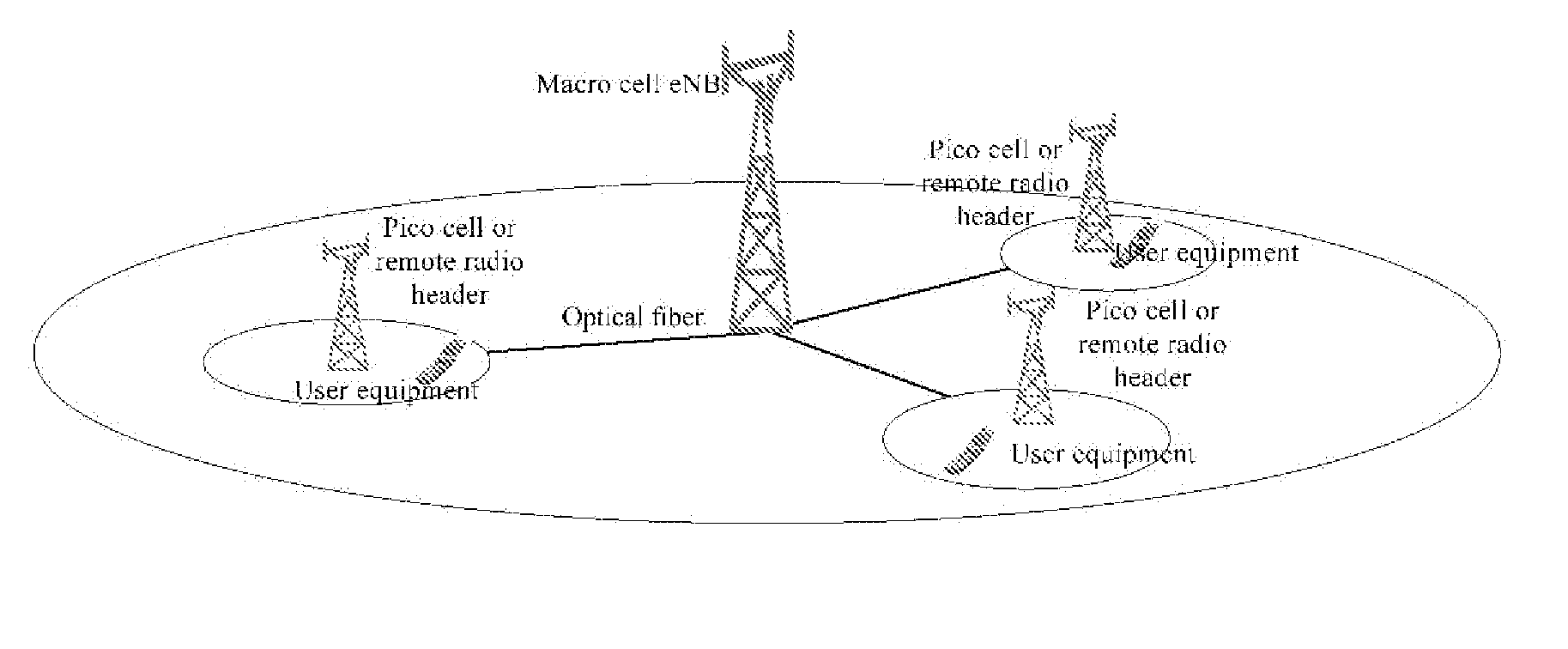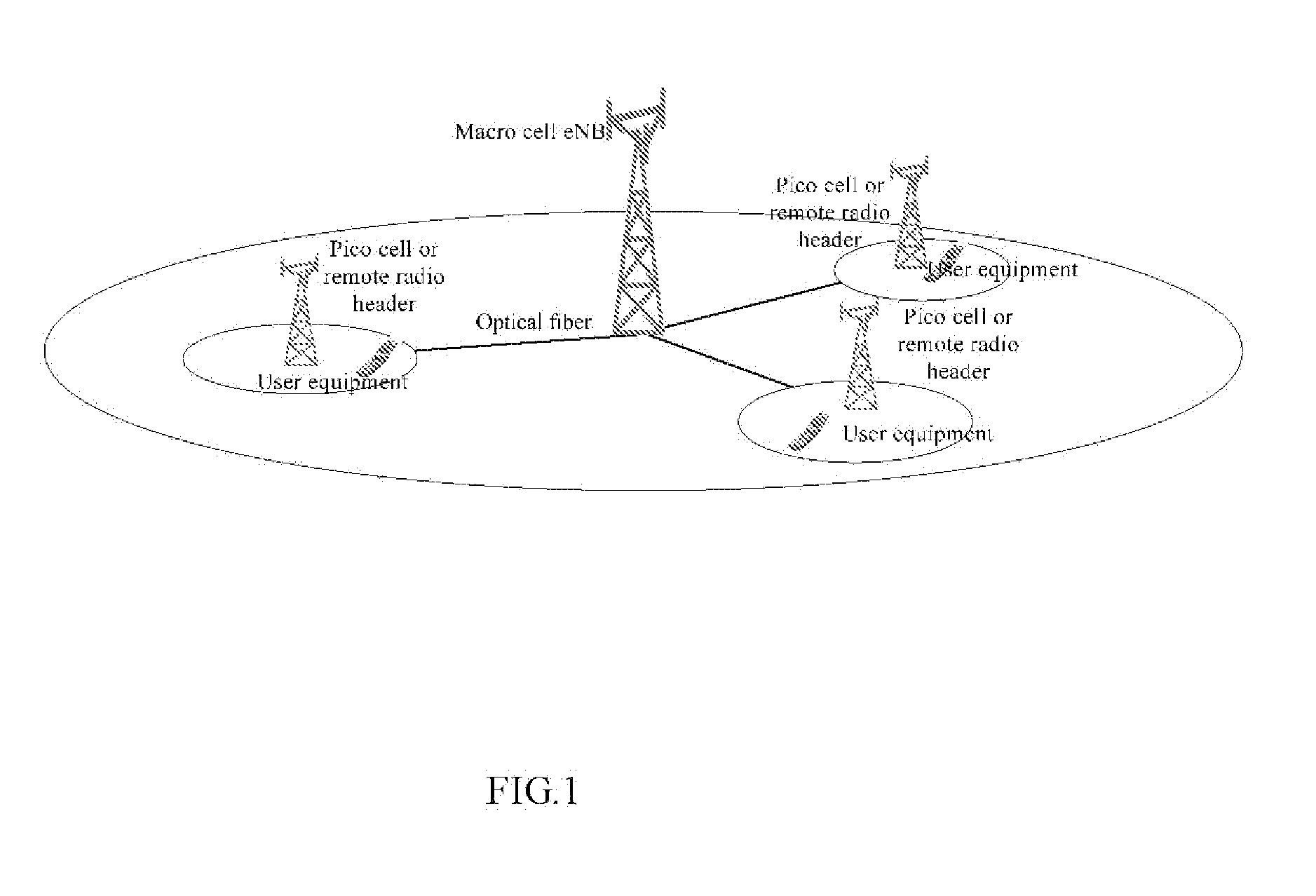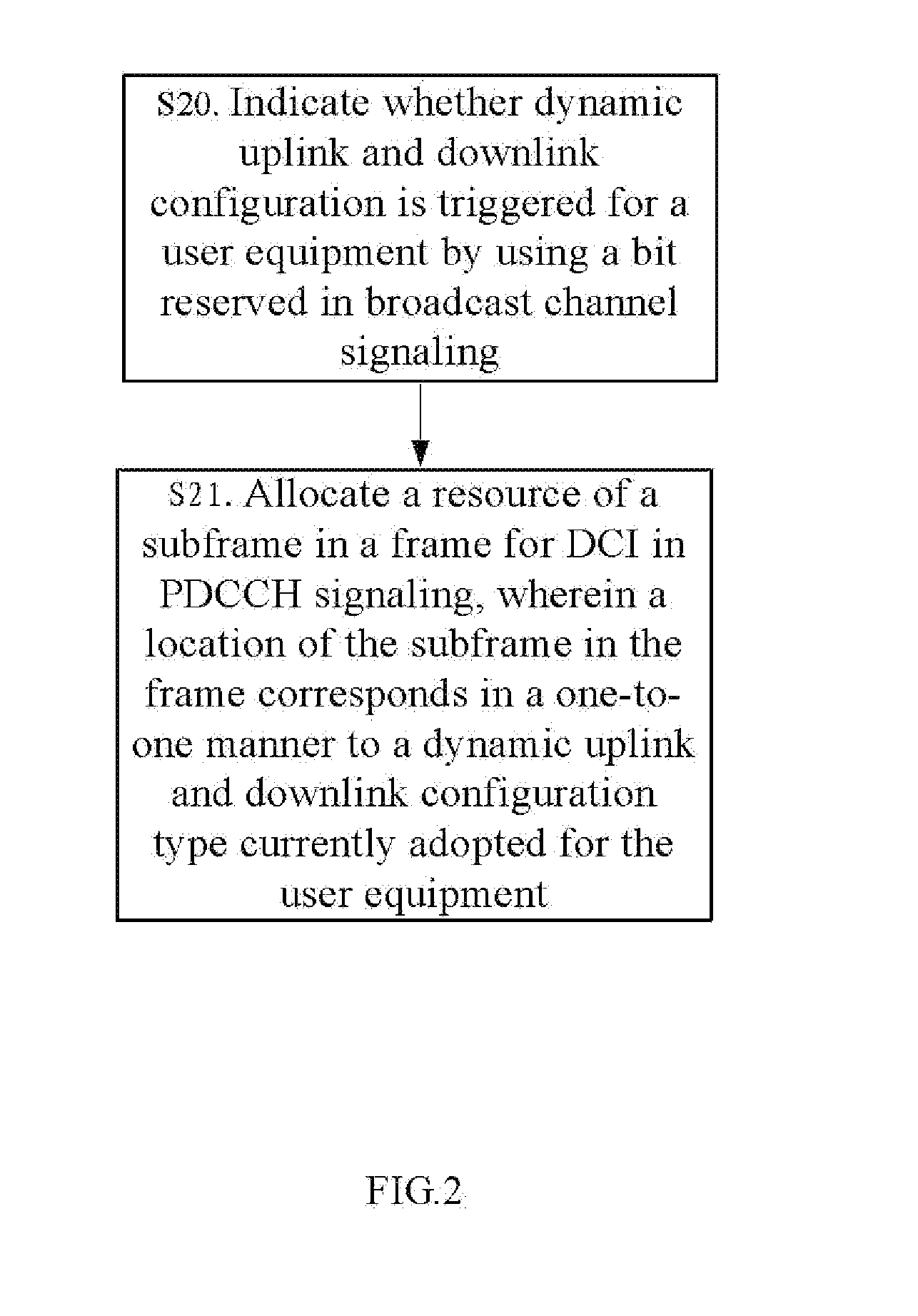Method of and apparatus for informing dynamic uplink and downlink configuration in heterogeneous network
- Summary
- Abstract
- Description
- Claims
- Application Information
AI Technical Summary
Benefits of technology
Problems solved by technology
Method used
Image
Examples
Embodiment Construction
[0021]FIG. 1 illustrates a schematic structural diagram of a network topology according to an embodiment of the invention, and the network includes a plurality of pico base stations and Remote Radio Headers (RRHs) distributed in a macro cell. Since uplink and downlink service traffic in one cell may differ from that in another cell, high spectrum efficiency can be achieved with TDD dynamic frame configuration for different cells. For the convenience of application, uplink and downlink service configuration for only a pico base station and an RRH can dynamically vary.
[0022]A well known advantage of a TDD system over a Frequency Division Duplex (FDD) system lies in asymmetry of its air interface frame structure between the uplink and downlink. This means that in a TDD frame, the number of Transmission Time Intervals (TTIs) in the uplink may different from that in the downlink, and the ratio thereof can be dynamically configured dependent upon the change in uplink and downlink service ...
PUM
 Login to View More
Login to View More Abstract
Description
Claims
Application Information
 Login to View More
Login to View More - R&D
- Intellectual Property
- Life Sciences
- Materials
- Tech Scout
- Unparalleled Data Quality
- Higher Quality Content
- 60% Fewer Hallucinations
Browse by: Latest US Patents, China's latest patents, Technical Efficacy Thesaurus, Application Domain, Technology Topic, Popular Technical Reports.
© 2025 PatSnap. All rights reserved.Legal|Privacy policy|Modern Slavery Act Transparency Statement|Sitemap|About US| Contact US: help@patsnap.com



